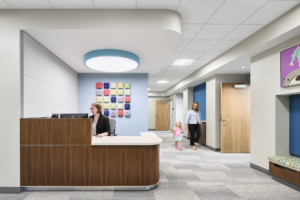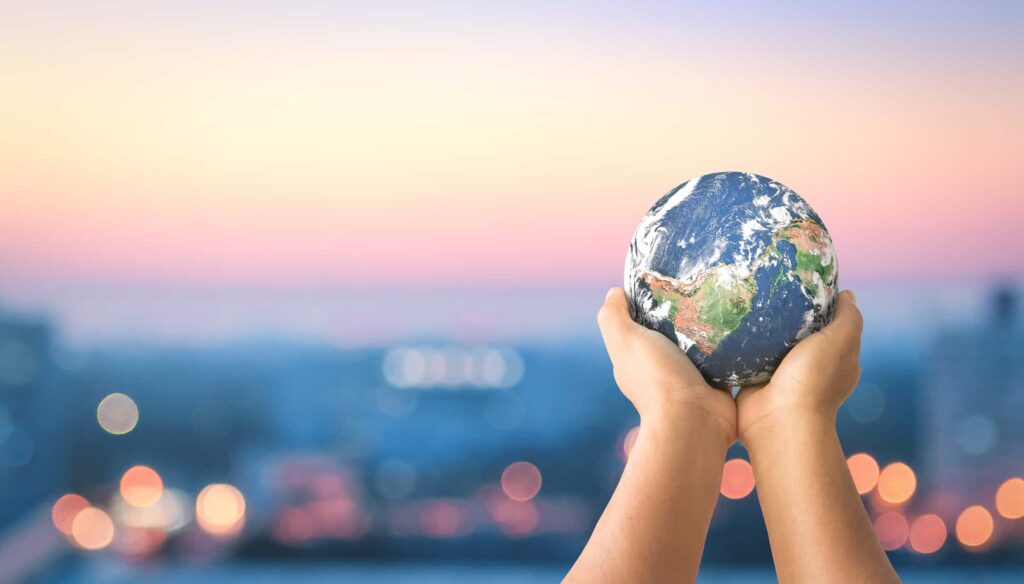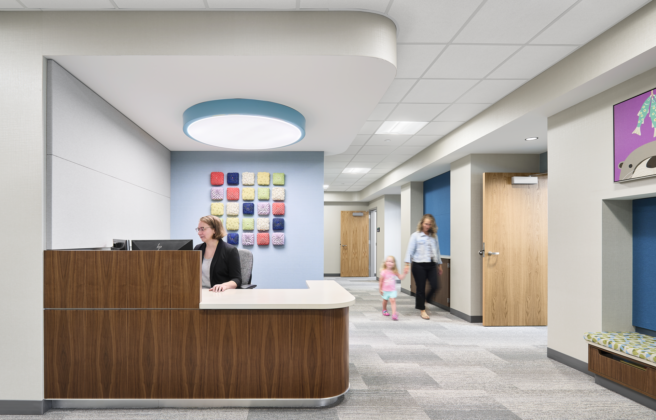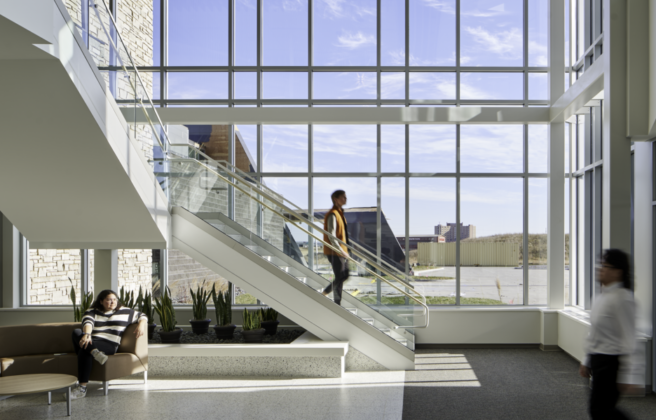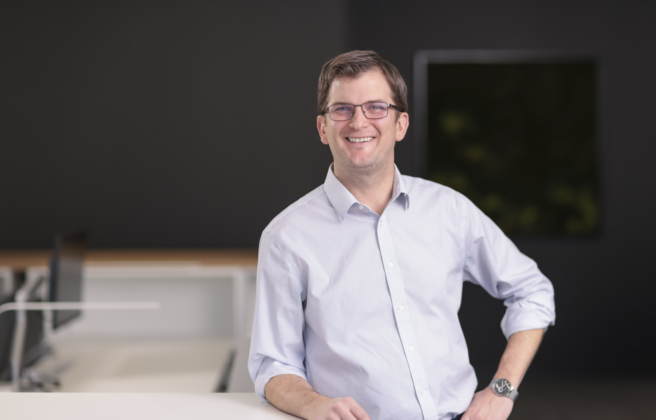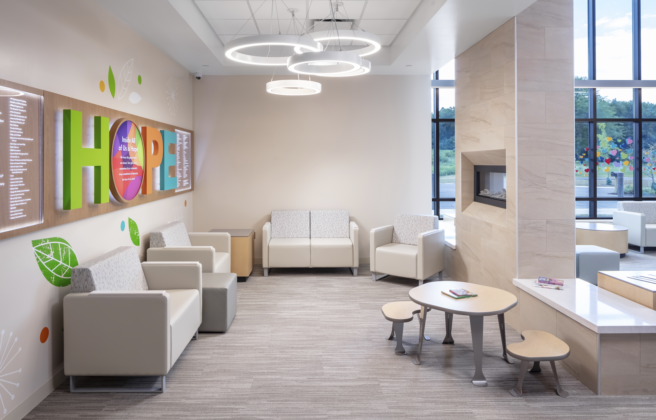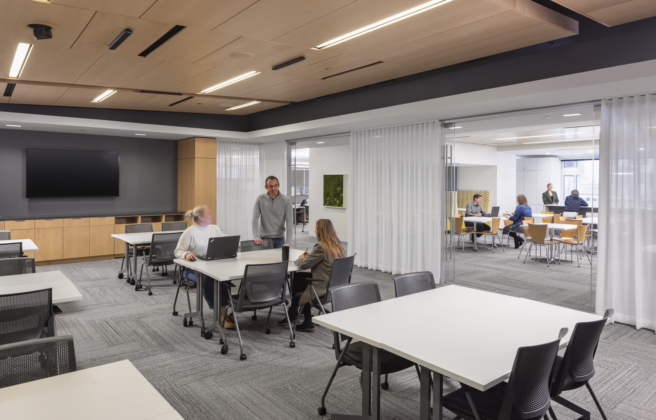In March 2020 when the pandemic forced the closures of schools, offices, restaurants, clinics, and other facilities, initial questions focused as much on when to reopen as on how to reopen.
Nearly a year later, organizations are still living the massive disruption to lives and operations caused by COVID-19, coupled with the social awakening forced on many through the murder of George Floyd. Answering when and how we’ll come back is now a deeper question: what will it all look like?
“If we learned nothing else during the last months, it’s that we have to be flexible. We have to be open to trying things in new ways. If they work, we have to lean into them, and if they don’t, we have to fail forward and move on.”
That insight from Pete Smith, FAIA, president and CEO of BWBR and a practicing architect, was echoed by others who joined him in BWBR’s first episode kicking off the launch of its new podcast, Side of Design. Smith, along with Nan Langevin, head of interior design at the firm, and Craig Peterson, AIA, LEEP AP, discussed from their various views of design how the pandemic and social unrest of the past year will profoundly impact our lives moving forward.
“Coming out of the pandemic, there will be a higher value placed and a recognition on the importance of the social and cultural aspects of people coming together.”
Craig Peterson, AIA, LEED AP
“What’s interesting is the idea, speaking specifically of the pandemic and stemming the contagion, is that it’s requiring steps that are antithetical to the human experience,” Peterson said. “[The steps] are about social distancing. It’s about being apart, whereas in all the design work we do, it’s about bringing people together.
“The impact of the pandemic is at the polar opposite of what design is intended to do.”
In a conversation whose tone ranged from introspective to excited, the three designers lent their unique perspective to the experience of the past year and how they see that impacting people and places. From the way we design our workspaces to accommodate collective work to the way we design our policies that address the real-world needs of individuals trying to balance competing demands, the discussion often veered to what we’re learning about ourselves, about our ability to empathize with others, and about what we value in in-person interactions.
“There things were fomenting before all of this took place: equity, social justice, climate change, sustainability, wellbeing, and taking care of ourselves,” Langevin said. “The pandemic clearly made us slow down, and people are experiencing their lives in different ways that are good.
“When you really think broadly about the changes taking place, they are all saying the same thing: Let’s take care of ourselves and each other,” she continued.
“We’ve known this for a long time, long before the pandemic, that people have different needs and work differently,” Smith said. “It’s not just generational. It’s life’s stages, too.”
To that end, he noted that, in this work-from-home environment, there is much that organizations are learning about the physical space and even more about the structure of work that makes it more empathetic as well as more beneficial for employees, organizations, and their clients. Take, for example, parents who are trying to juggle the demands of work, their child’s school, and being in a healthy partnership. Trusting employees to do the work can empower them in ways that make that time for work more productive.
“It’s an exciting time to be a designer, because all the rules of design no longer exist.”
Pete Smith, FAIA
“For the past two-and-a-half years, we’ve been working on [gender] equity, trying to make sure that every voice is valued and heard. If a portion of your staff is not bringing their full self to the work, we’re not firing on all cylinders as an organization,” he said.
“Forward to the pandemic…when staff are working, even when it’s reduced hours, they are bringing their full self. When we get out of this on the other side, if we say we are going to give people flexibility to do what works best for them so that they bring their full selves to work, we’re going to be a better organization. We’re going to work better. We’re going to fire on all cylinders, and we’re going to provide better solutions.”
To that, all three said that the way people see the function of space coming out of this time period will change. No longer will it be seen as just a destination for work or learning or to receive services. It will be part of a larger system that allows us to connect, collaborate, and develop the relationships that define our lives in and out of work.
“A lot people really have differing opinions about working from home. Some people love it, some people don’t like it,” Langevin said. “One thing that they have in common is that they miss the people from the office. They miss socializing. They miss hanging out and laughing. They miss hanging out with each other. That you cannot replace that in the Zoom world.”
“Coming out of the pandemic, there will be a higher value placed and a recognition on the importance of the social and cultural aspects of people coming together. It’s not a place to sit there and get the work done,” Peterson said. “It’s a place to soak in the social and cultural nurturing that can happen with shared experiences with coworkers and friends that enhance your life.”
“There isn’t going to be a solution that says, ‘This is what we need to do coming out of the pandemic,’ or ‘This is what we need to do to solve social justice issues,’” Smith said. “It’s going to be a bit of an experiment, a bit of piloting and testing and failing forward and trying different things.”
“It’s going to be a more forgiving process,” Langevin said. “Building in equity and more sustainability, we’ll have more opportunity to change as we go along and adapt to what we all find that we’re needing.”
“It’s an exciting time to be a designer,” Smith said, “because all the rules of design no longer exist.”
Side of Design is a new podcast from BWBR. Episodes come out every two weeks exploring the performance of organizations and the people and facilities that power them. Look for Side of Design where you listen to your favorite podcasts.

